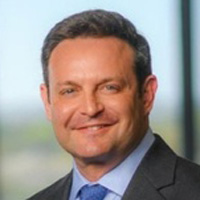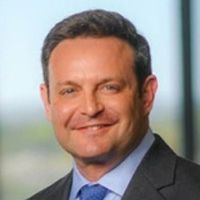Pay the Taxes You Owe and Not a Cent More
Stressing about the taxes you’ll pay in retirement? Here are some ways to help reduce your tax liability when you retire, including managing RMDs.

It’s not exactly a secret that the United States government has a spending problem. The national debt is at $31.5 trillion and counting, and at some point, the bill is going to come due. One possible scenario, of course, would be a massive increase in taxes.
Already, one tax increase is on the horizon. Unless something changes between now and then, the 2017 tax cuts are set to expire at the end of 2025.
This dark cloud of taxes hovering over the future can be especially troubling for retirees, many of whom already worry about making sure their savings last the rest of their lives. Fortunately, options exist to help reduce your tax liability in retirement. Here are a few strategies to consider now.
From just $107.88 $24.99 for Kiplinger Personal Finance
Become a smarter, better informed investor. Subscribe from just $107.88 $24.99, plus get up to 4 Special Issues

Sign up for Kiplinger’s Free Newsletters
Profit and prosper with the best of expert advice on investing, taxes, retirement, personal finance and more - straight to your e-mail.
Profit and prosper with the best of expert advice - straight to your e-mail.
Roth conversions
Converting traditional IRA and 401(k) accounts to Roth accounts has become a popular way to reduce the amount of taxes you will pay in retirement. Many Americans have their retirement savings in tax-deferred accounts, such as those traditional IRAs or 401(k)s. This means that the money they contributed to those accounts was not taxed. But the tax bill is coming due when they retire and begin making withdrawals.
Also, starting at age 73, people holding those accounts are subject to required minimum distributions (RMDs). That means they must withdraw a certain percentage each year and pay taxes on the withdrawal, even if they don’t need the money. (The RMD age has changed. More on that in a moment.)
Roth IRAs don’t have an RMD. That’s because they are not tax-deferred accounts. Instead, you pay taxes on the money at the time of contribution. After that, the accounts grow tax-free, and you aren’t taxed when you make withdrawals in retirement.
This is why it can be a smart move to begin now to shift your money from tax-deferred accounts to Roth accounts. You pay taxes when you make the Roth conversions, but the money then grows tax-free, and you won’t have to worry about those RMDs.
Just make sure you do it the right way. You don’t want to shift all your money all at once because you can push yourself into a higher tax bracket and end up with a hefty tax bill.
Also, if you are on Medicare Part B or Part D, you could trigger an increase in your premium. It’s best to stretch the conversion over several years. A financial professional should be able to help you determine the best strategy for you.
Qualified charitable distributions
The qualified charitable distribution, or QCD, is another way to avoid paying RMDs. This is especially advantageous for people who don’t need their IRA money and would like to give to a favorite charity. If you set up a QCD, you can send your withdrawal directly to that charity, and there is no tax on it.
You just need to make sure that you set things up for a direct transfer from your IRA to the QCD. If the money goes to you first and then you make the contribution to the QCD, the withdrawal is still taxed. A few other things to know: You must be age 70½ or older to set up a QCD; an IRA is eligible, but a 401(k) is not; and individuals can contribute up to $100,000 annually.
A donor-advised fund
Over the years, the standard deduction on the 1040 form has risen so high ($27,700 for a married couple filing jointly in 2023) that most people no longer itemize deductions. This means charitable donations don’t have the tax advantage they once did. But in some cases, a donor-advised fund can help.
This is an account established where you place donations to be distributed to a favored charity. Your donation is immediately tax deductible, but the money can be paid out to the charity over years, gaining interest in the meantime.
How does this help you outpace the standard deduction? As just one example, let’s say that you donate $10,000 to your church each year. You could donate $30,000 to the donor-advised fund in one year and claim the tax deduction, but the church would be paid the money over time.
Age for taking RMDs has changed
As mentioned earlier, the age you must begin taking RMDs has been 72, but there are new RMD rules. Starting this year, the RMD age is raised to 73. Then, starting on Jan. 1, 2033, it will go up to 75.
That might sound good, allowing you to delay the RMDs longer, but it has its own pitfalls. RMDs are calculated based on a percentage of the money in the account. That extra time delaying the RMD could mean you will have an even larger balance, meaning the RMD will be larger and the amount of taxes owed greater. That’s one more reason to consider converting to a Roth.
One important thing to remember about taxes is that, too often, people fail to think about them until it’s filing time in April, and they check in with a CPA. At that point, it’s too late to do much to help lower your tax bill from the previous year. Dec. 31 is the real tax deadline — not April 15.
CPAs do great work and will help make sure you are in compliance with the laws and that you take advantage of any tax credits or deductions you are due. But their focus is tax preparation, not tax planning. In other words, if you didn’t already make moves with your Roth, set up that QCD, establish a donor-advised fund or take other steps aimed at minimizing your taxes, your CPA’s hands (and calculator) will be tied.
This is why it doesn’t hurt to have a tax team on your side. In addition to your CPA, you should have a financial professional who understands how to navigate the tax rules to position your money in the most advantageous manner.
The desired result: You will pay what the laws require — but not a penny more.
Ronnie Blair contributed to this article.
The appearances in Kiplinger were obtained through a PR program. The columnist received assistance from a public relations firm in preparing this piece for submission to Kiplinger.com. Kiplinger was not compensated in any way.
Profit and prosper with the best of Kiplinger's advice on investing, taxes, retirement, personal finance and much more. Delivered daily. Enter your email in the box and click Sign Me Up.

Steve Meeks is the president and founder of Interlinc Financial, where he helps clients protect their wealth and lifestyles. With decades of experience, Meeks uses an educational approach to ensure clients have the knowledge to make informed, productive choices. He is a tactical and strategic thinker — skills he developed as a U.S. Navy tactical strategist specializing in warfare and search and rescue. Steve Meeks has passed the 65 Securities exam and has a life insurance license.
-
 5 Gifts the IRS Won’t Tax: Even If They’re Big
5 Gifts the IRS Won’t Tax: Even If They’re BigGift Tax Several categories of gifts don’t count toward annual gift tax limits. Here's what you need to know.
-
 The 'Scrooge' Strategy: How to Turn Your Old Junk Into a Tax Deduction
The 'Scrooge' Strategy: How to Turn Your Old Junk Into a Tax DeductionTax Deductions We break down the IRS rules for non-cash charitable contributions. Plus, here's a handy checklist before you donate to charity this year.
-
 IRS Says You Made a Tax Return Mistake? A New Law Could Help You Fight Back
IRS Says You Made a Tax Return Mistake? A New Law Could Help You Fight BackTax Law Updated taxpayer protections change what the IRS must explain on error notices and how long you have to respond.
-
 I'm a Tax Attorney: These Are the Year-End Tax Moves You Can't Afford to Miss
I'm a Tax Attorney: These Are the Year-End Tax Moves You Can't Afford to MissDon't miss out on this prime time to maximize contributions to your retirement accounts, do Roth conversions and capture investment gains.
-
 I'm an Investment Adviser: This Is the Tax Diversification Strategy You Need for Your Retirement Income
I'm an Investment Adviser: This Is the Tax Diversification Strategy You Need for Your Retirement IncomeSpreading savings across three "tax buckets" — pretax, Roth and taxable — can help give retirees the flexibility to control when and how much taxes they pay.
-
 Could an Annuity Be Your Retirement Safety Net? 4 Key Considerations
Could an Annuity Be Your Retirement Safety Net? 4 Key ConsiderationsMore people are considering annuities to achieve tax-deferred growth and guaranteed income, but deciding if they are right for you depends on these key factors.
-
 I'm a Financial Pro: Older Taxpayers Really Won't Want to Miss Out on This Hefty (Temporary) Tax Break
I'm a Financial Pro: Older Taxpayers Really Won't Want to Miss Out on This Hefty (Temporary) Tax BreakIf you're age 65 or older, you can claim a "bonus" tax deduction of up to $6,000 through 2028 that can be stacked on top of other deductions.
-
 Meet the World's Unluckiest — Not to Mention Entitled — Porch Pirate
Meet the World's Unluckiest — Not to Mention Entitled — Porch PirateThis teen swiped a booby-trapped package that showered him with glitter, and then he hurt his wrist while fleeing. This is why no lawyer will represent him.
-
 Smart Business: How Community Engagement Can Help Fuel Growth
Smart Business: How Community Engagement Can Help Fuel GrowthAs a financial professional, you can strengthen your brand while making a difference in your community. See how these pros turned community spirit into growth.
-
 In 2026, the Human Touch Will Be the Differentiator for Financial Advisers
In 2026, the Human Touch Will Be the Differentiator for Financial AdvisersAdvisers who leverage innovative technology to streamline tasks and combat a talent shortage can then prioritize the irreplaceable human touch and empathy.
-
 How Financial Advisers Can Deliver a True Family Office Experience
How Financial Advisers Can Deliver a True Family Office ExperienceThe family office model is no longer just for the ultra-wealthy. Advisory firms will need to ensure they have the talent and the tech to serve their clients.
